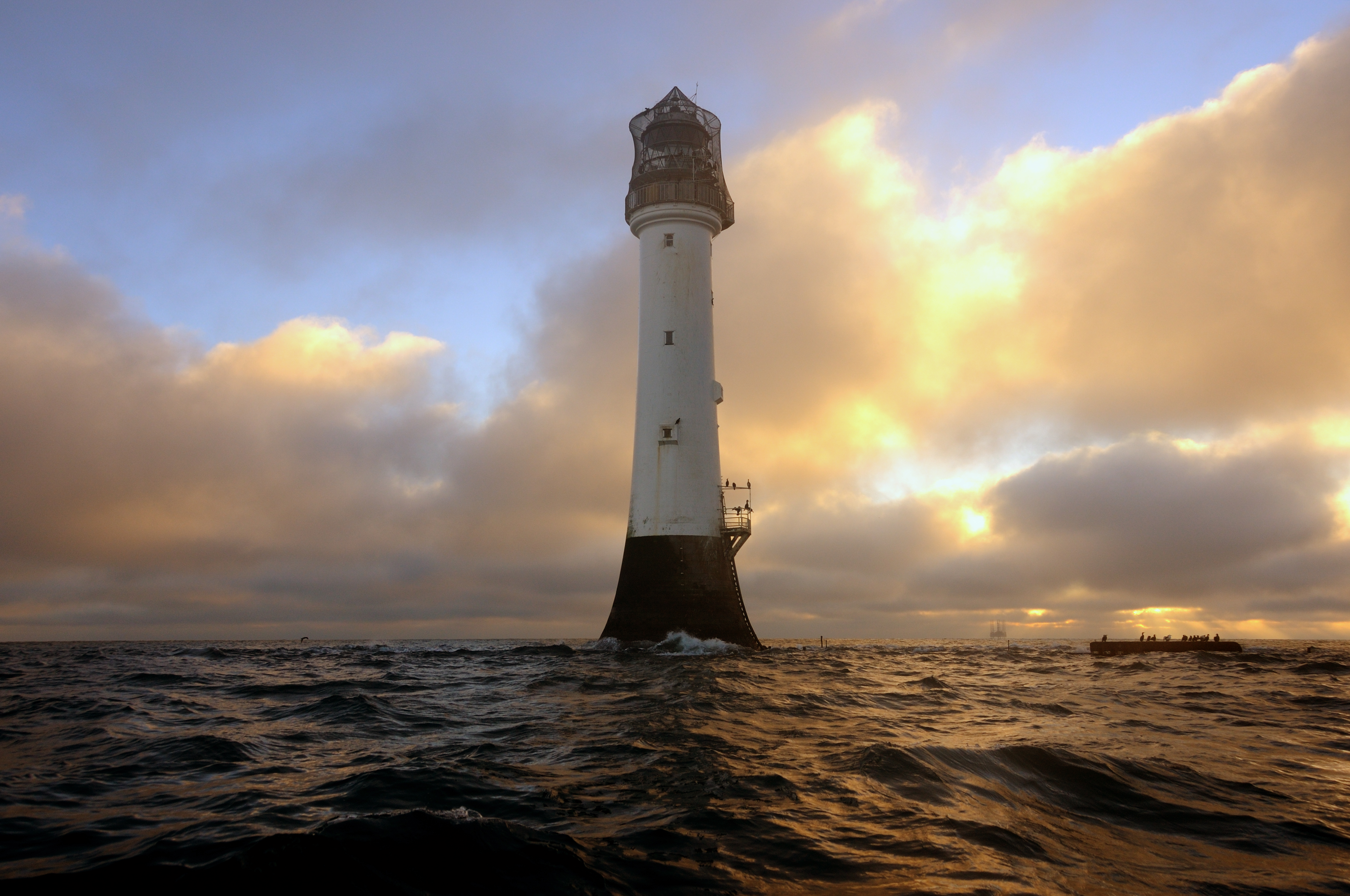"A ruddy gem of changeful light" - The Bell Rock Lighthouse
"A ruddy gem of changeful light" - The Bell Rock Lighthouse
“Far in the bosom of the deep
O’er these wild shelves my watch I keep
A ruddy gem of changeful light
Bound on the dusky brow of Night
The Seaman bids my lustre hail
And scorns to strike his tim’rous sail”
The Pharos Loquitur written by Sir Walter Scott on his visit to the Bell Rock
The Bell Rock is the world’s oldest working sea-washed lighthouse. The tower sits upon the Bell, or Inchcape Rock, a long and treacherous reef lying in the North Sea, situated off the Angus Coast. Isolated in wild and windy weather, the lighthouse has helped vessels to navigate this dangerous spot since its construction.
The Bell Rock Lighthouse, © Ian Cowe
The Commissioners of Northern Lighthouses (Northern Lighthouse Board ), has existed since 1786 and instigated the construction of the lighthouse. Since its inception, the Board has done much to help create and maintain lighthouses and has a tradition of exceptional engineering. The purpose of lighthouses, and that of the Board, is neatly summed up by their motto: they exist In Salutem Omnium – for the safety of all.
Records and stories of the treachery of the Inchcape Rock echo down the centuries. One of the earliest accounts and legends which surround it, dates back to the 14th century, when the Abbot of Arbroath is said to have placed a warning bell upon the rock. While this story gives the land its alternative name, if we are to believe the poem by Robert Southey, the Abbot’s efforts to preserve life were frustrated when the pirate Ralph the Rover stole the bell, reaping the rewards from the cargo ships that ran aground. However, poetic justice was delivered, as it is said that Ralph’s career came to an abrupt end with his own ship dashed upon the rocks.
“They hear no sound, the swell is strong;
Though the wind hath fallen, they drift along,
Till the vessel strikes with a shivering shock,
Cried they, “It is the Inchcape Rock!”
Sir Ralph the Rover tore his hair,
He cursed himself in his despair,
The waves rush in on every side,
The ship is sinking beneath the tide.
But even in his dying fear,
One dreadful sound could the Rover hear,
A sound as if with the Inchcape Bell
The Fiends below were ringing his knell”
The continuing risk the rock posed to sailors remained an ongoing concern. By the late 1700s, the increase in maritime trade meant more and more ships were at risk. In December 1799, the loss of 70 vessels along the Fife and Angus coast line was reported during dreadful storms; on 16 November 1800, the Peterhead and Banff Packet foundered on the rock (the crew and passengers fortunately survived); and on 26 December 1803, the HMS York was lost, with all 491 crew.
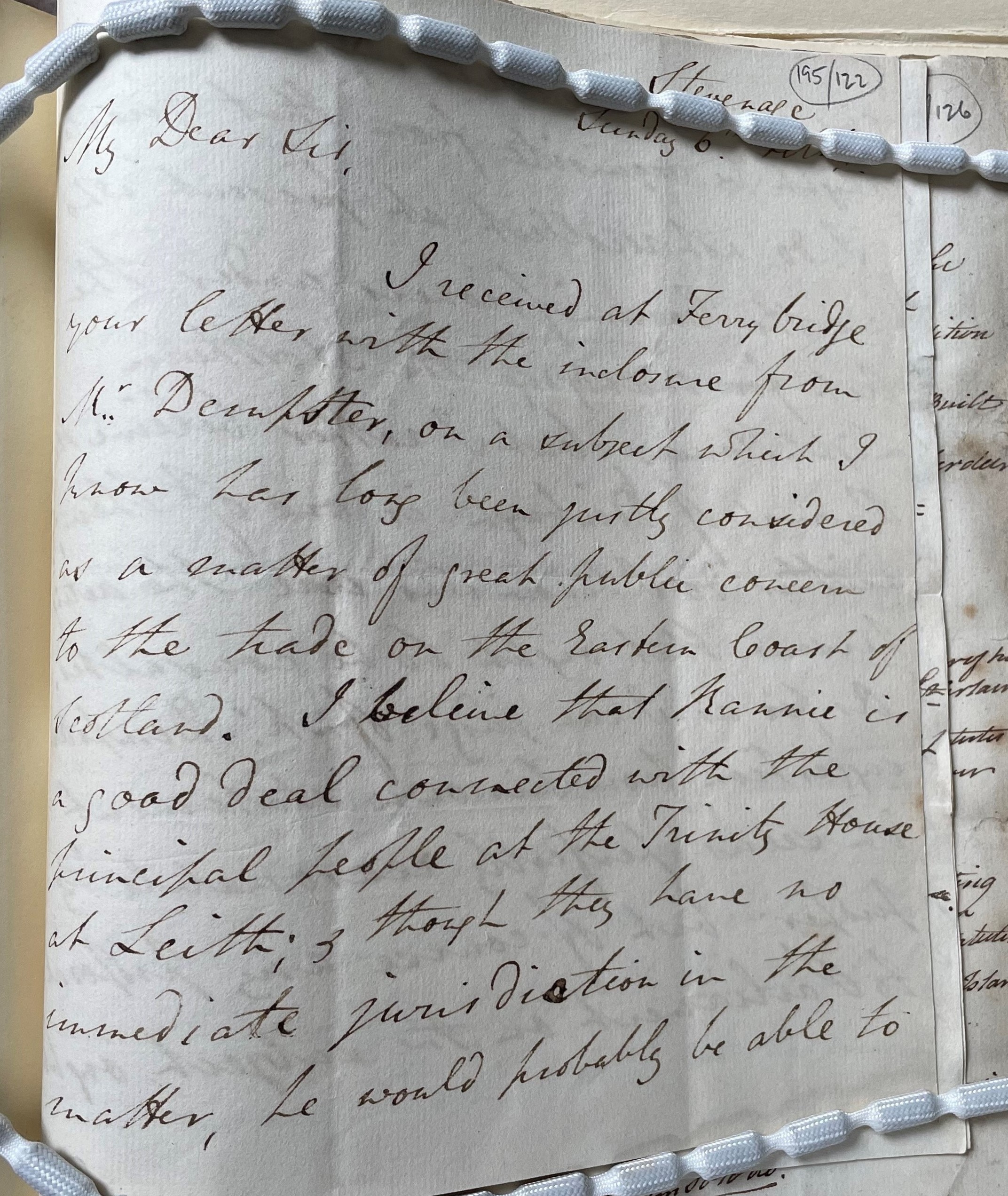
Correspondence between Lord Melville and his son, Robert Dundas. This letter discusses the proposed erection of a lighthouse on the Bell Rock, mentioning ‘Dempster’; George Dempster was the Member of Parliament for Fife and Forfar Burghs. Dempster was instrumental in drafting a Bill to establish a Scottish lighthouse authority, which helped to found the Northern Lighthouse Board. His family estate was at Dunnichen, north-west of Arbroath and he would have been well aware of the problem of the Bell Rock. (National Records of Scotland, GD51/1/195/122, no date)
It was obvious that a solution had to be found and in 1806 a new Bill was introduced into Parliament: a proposal for a stone tower lighthouse, with prominent engineer, John Rennie, adding his support. The Bill passed and the Northern Lighthouse Board was permitted to borrow £25,000 (approximately £1,101,822.50 in today’s money, calculated using The National Archives currency converter) towards construction costs.
Two men were responsible for the design and construction of the Bell Rock Lighthouse, the founder of the engineering dynasty, Robert Stevenson (1772-1850) and John Rennie (1761-1821) Rennie was appointed as Chief Engineer, and Stevenson as his deputy.
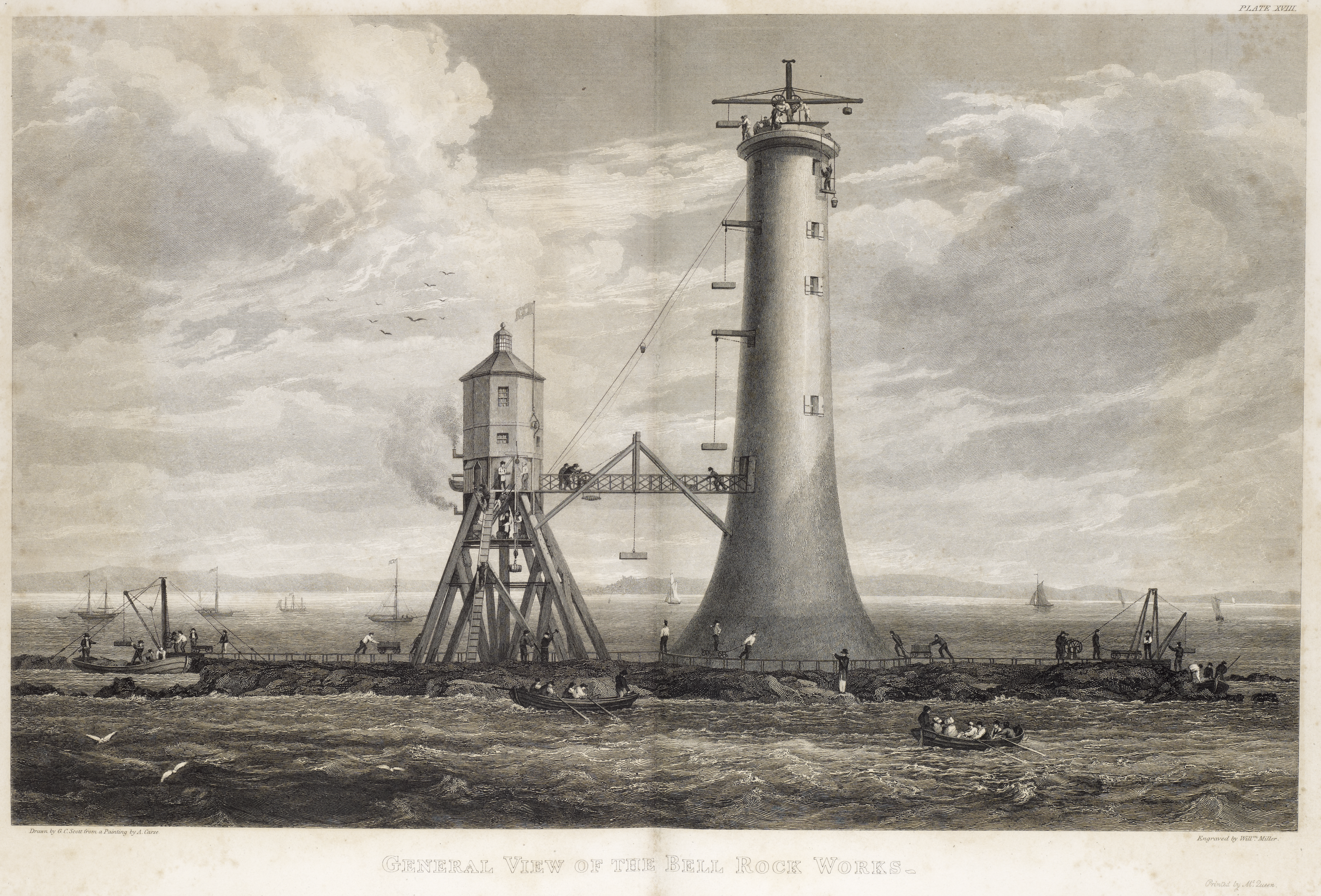
©HES (illustration from R. Stevenson, An Account of the Bell Rock Lighthouse)
Built from intricately cut stones, the lighthouse used a dovetailing technique insisted upon by John Rennie, and was a feature of the Eddystone Lighthouse built by John Smeaton in 1759. This method creates a giant mosaic of sandstones, the design of which ensures that when the tower is struck with the weight of powerful waves, the force makes the stones ‘cleave together instead of tugging them apart’. While Rennie was largely responsible for the Bell Rock’s design, it was Stevenson who maintained a constant presence during its construction, overseeing the work, and after the installation of working barracks upon the Inchcape – a feat in itself – staying onsite with the labourers.
Consisting of 90 courses of stone, amounting to 36 metres, on the 30 July 1810 the last layer was set in place. The final stone was accompanied by Stevenson’s words: ‘May the Great Architect of the Universe, under whose blessing this perilous work has prospered, preserve it as a guide to the mariner’.
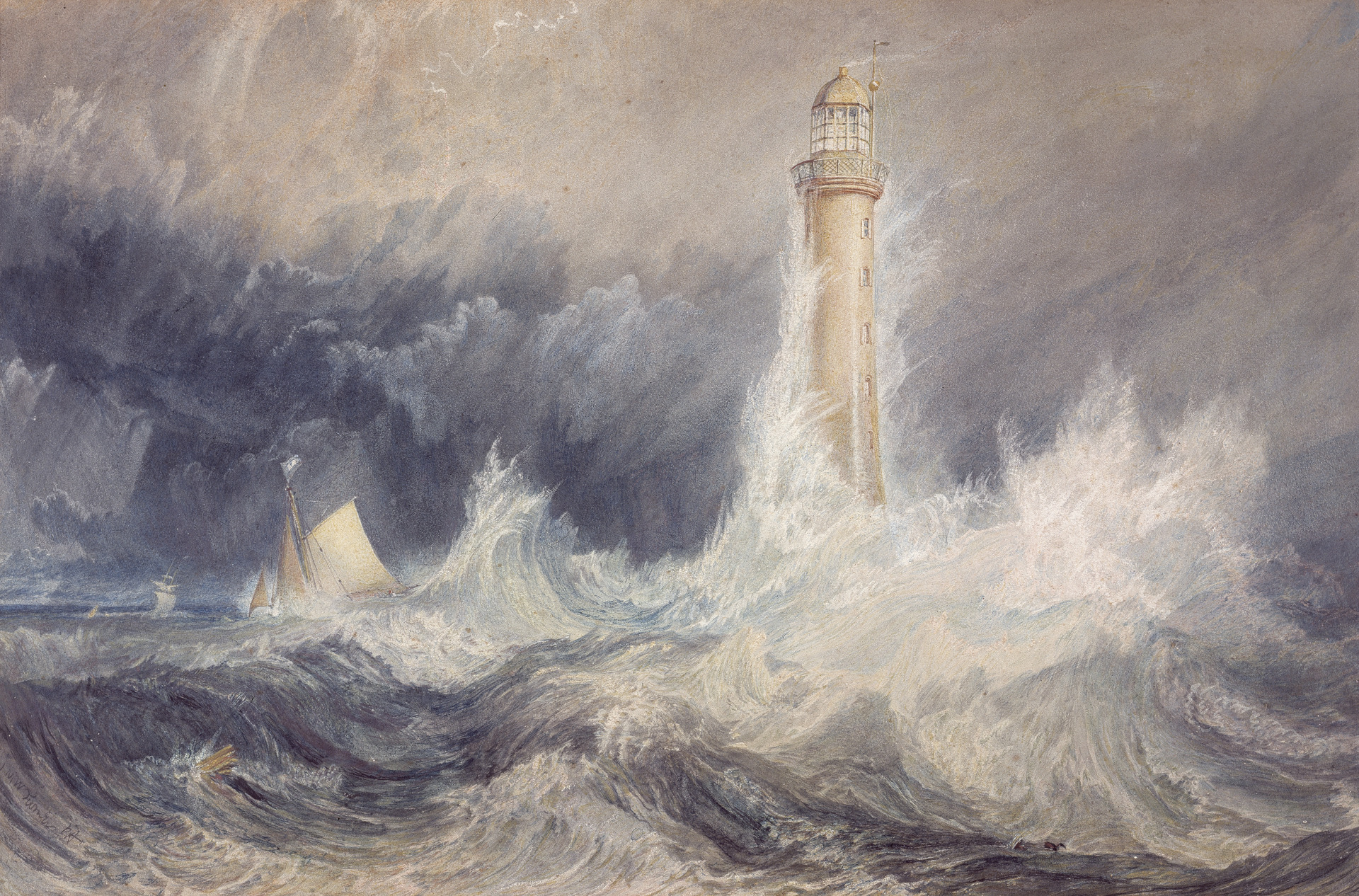
Joseph Mallord William Turner (1775-1851), Bell Rock Lighthouse, 1819. Courtesy of the National Galleries of Scotland
In February 1811, the lamp was lit and the tower habitable, allowing three keepers to reside at any one time. Initially, this was for six weeks, followed by two onshore. Over time, it changed to two months on, one month off, and by the 1970s, one month on, and one month off.
The National Records of Scotland (NRS) hold the records of the Commissioners of the Northern Lighthouses. A corporate body operating as the ‘Northern Lighthouse Board’ (NLB), they have responsibility for Scotland and the Isle of Man. Established, and given powers to borrow money, purchase land, and levy dues from ships for their work, the records provide a fascinating insight into the development of lighthouses, and the lives of lightkeepers.
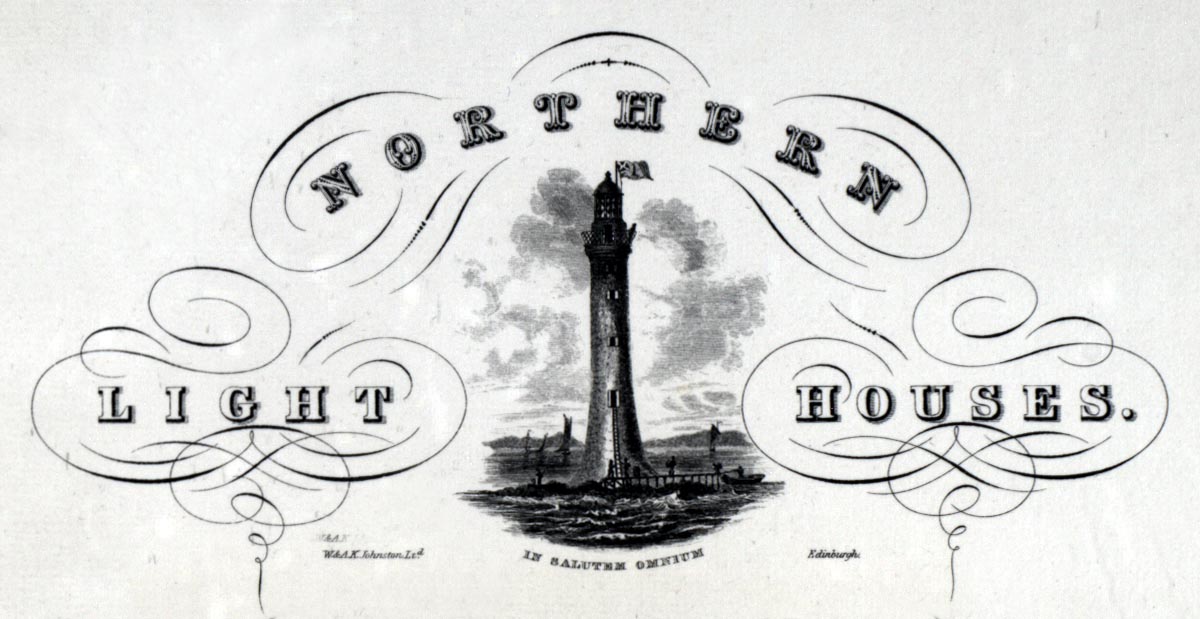
The paper header for a blank Commission to notify individuals of their appointment as a Lighthouse Keeper. So unique and treasured is the Bell Rock, that it has formed the key symbol or logo of the Northern Lighthouses (NRS, NLC19/33)
Full descriptions of the NLB’s records can be found on the NRS’ online catalogue (series reference NLC). These include: annual reports; minute books of the Board; meeting schedules; meeting papers; correspondence; registers of lightkeepers; general orders; lighthouse visitor albums and much more. Four volumes, spanning 84 years (1837-1921) from the Lightkeeper registers, are now also available to search via ScotlandsPeople, where records can be searched by a lightkeeper’s name, or by lighthouse.
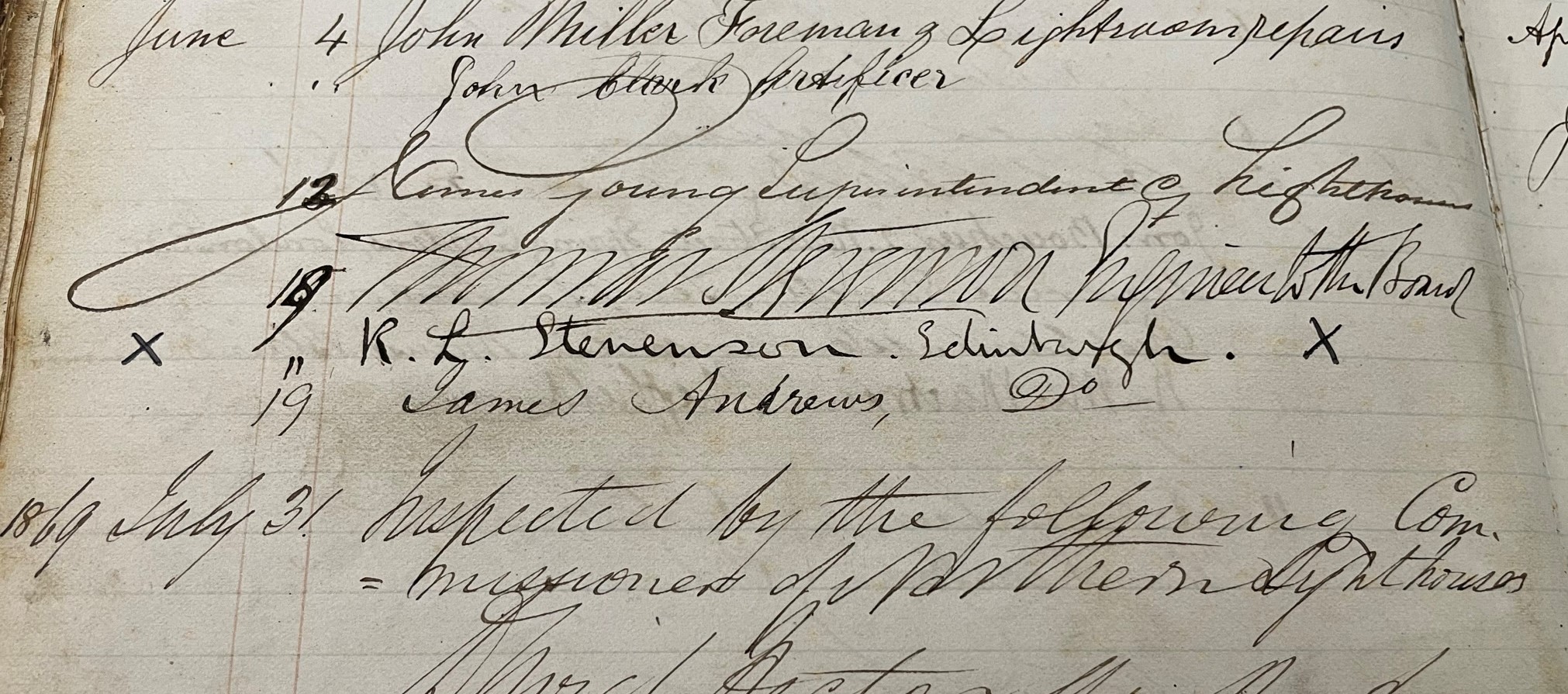
‘X’ marks the spot. The signature of Robert Louis Stevenson from the Visitors Album for Muckle Flugga (North Unst) Lighthouse, dated 19 June 1869 (NRS, NLC75/3/2)
From these records we know that for a brief time the light of the Bell Rock was extinguished during the First World War, with questions raised about whether the lightkeepers should remain upon the rock as, ‘they have few duties to perform, and there is no doubt that their spirits, health and nerves are liable to be somewhat affected by want of occupation and exercise, combined with such anxiety as might be felt on account of the isolated and exposed position of the lighthouse’ (23 December 1914, NRS, NLC3/1/51). While the light, was indeed extinguished, the lightkeepers remained, prepared to assist the fleet and answer any requests for the lights to be turned on once more. The concern, was that the light that once guided ships to safety, would now guide German submarines and planes to attack.
Despite the lightkeepers remaining on duty during the war, on 27 October 1915, a failure to contact the lighthouse meant that the HMS Argyll struck the reef. While it unfortunately sank, all 655 crew were safely retrieved.
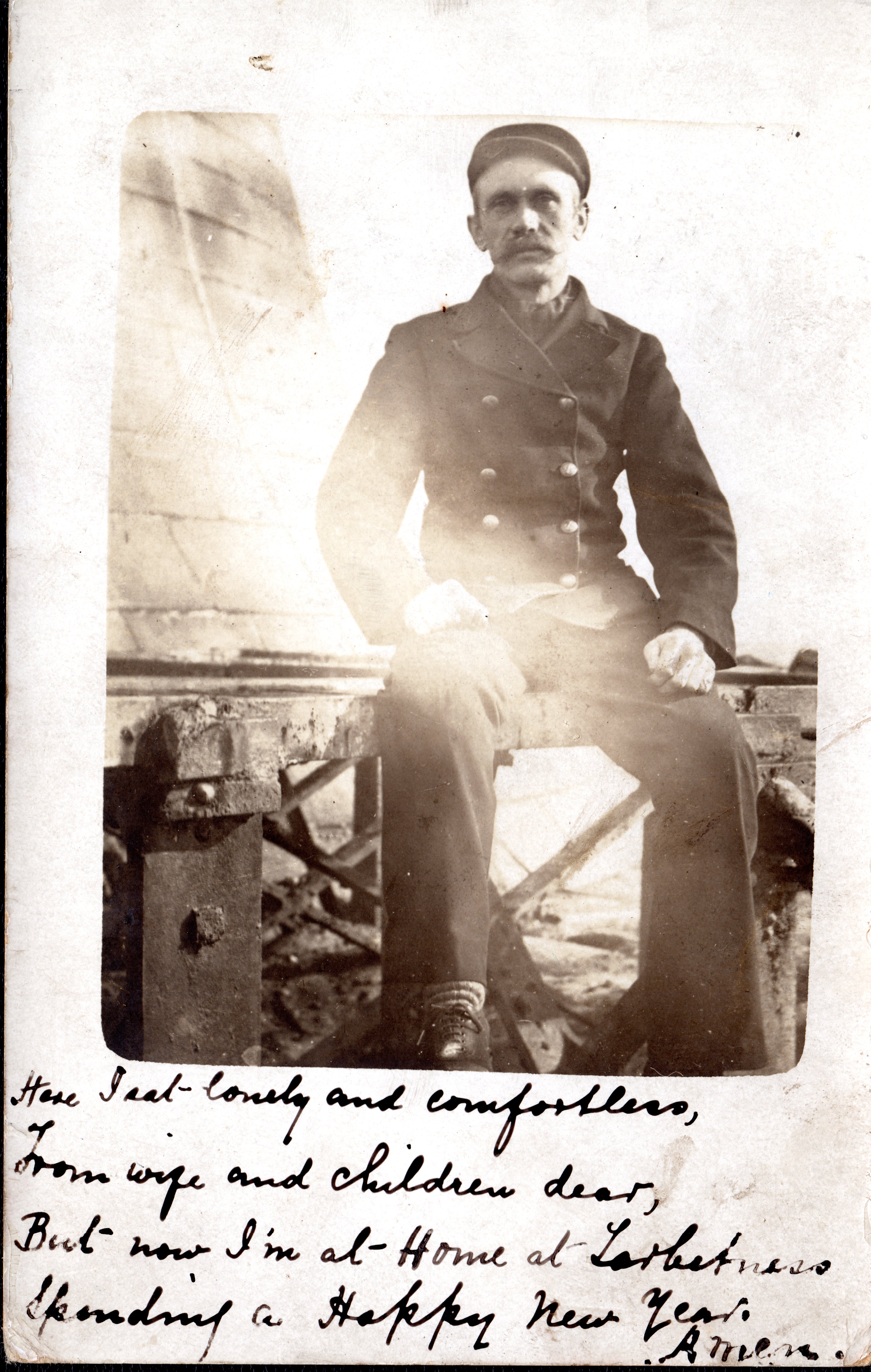
John Brown Henderson served on the Bell Rock for several years and may have been stationed there when the HMS Argyll struck the rock, n.d. Photograph courtesy of the Morrison Family.
In the Second World War, further concerns were raised about the safety of the lighthouses, and their potential as ‘special targets’. These concerns were not unfounded, as the records reveal that the Bell Rock was attacked on four separate occasions:
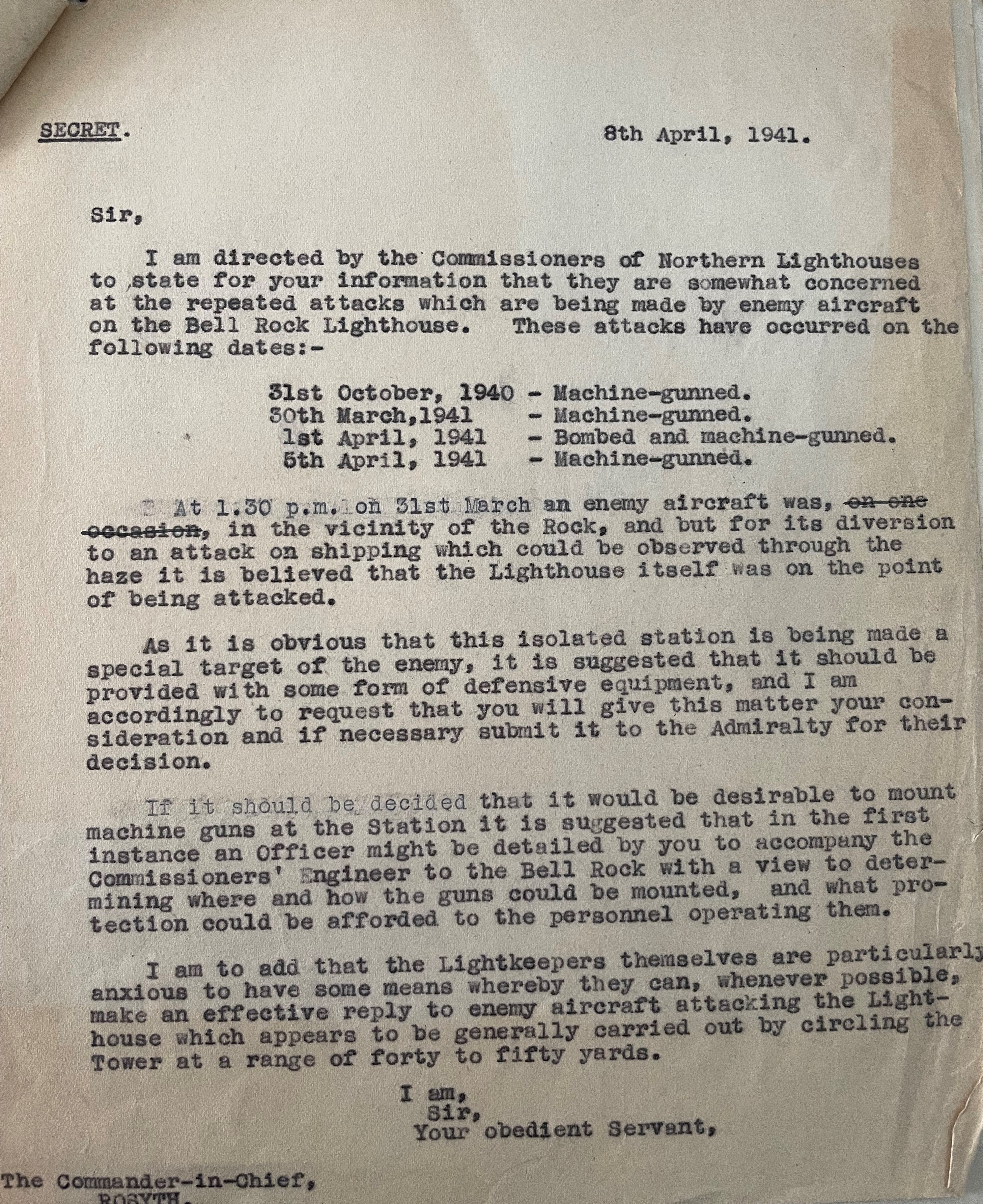
Letter from the Commander in Chief, 8 April 1941 (NRS, NLC10/3/61/124)
No one was injured during these attacks, but the lantern was damaged with nine bullet holes through the dome, 14 broken lantern panes, four lenses damaged, six red shades smashed and some damage to the surrounding balcony. Fortunately, the bomb did not directly strike the tower, with the effects remaining localised. Records note that ‘Assistant Keeper J.H. Sanderson stated that when struck by heavy seas the tower vibrates more since the bomb struck the rock’ (Report on the Bell Rock Lighthouse by John Oswald, Engineer, 21 April 1942. NRS, NLC10/3/61), but otherwise there was no material damage.
The concern created by such attacks led to lighthouses being armed. All willing lightkeepers became members of the Home Guard and received training on Hotchkiss Guns. Each lightkeeper undertook the necessary training and plans were discussed and implemented for the erection of gun platforms on the balcony of the Bell Rock Lighthouse. Three such guns were eventually installed.
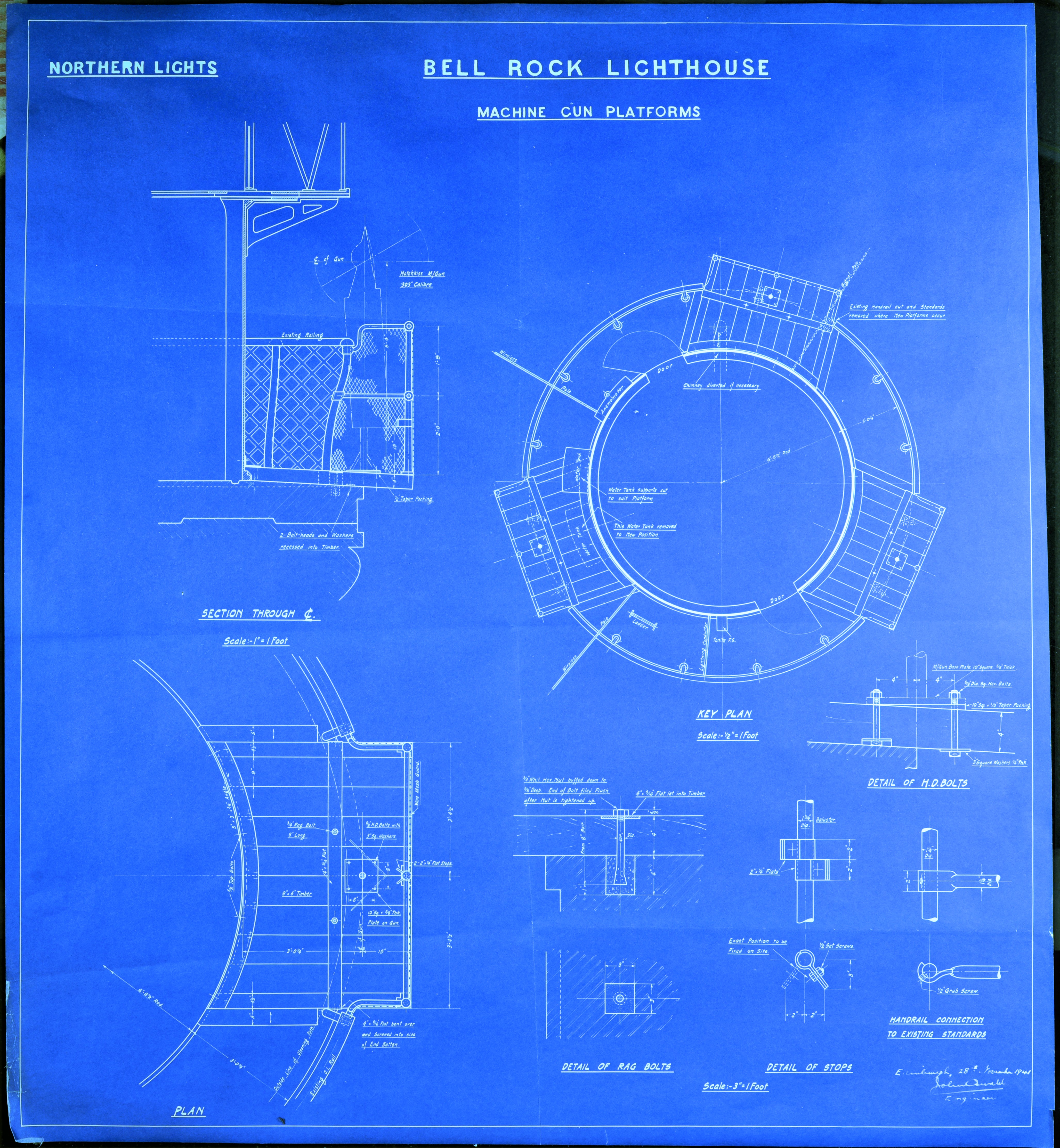
Plan for the position of machine gun platforms on the Bell Rock Lighthouse. NRS, NLC10/3/61/519
Lightkeepers were provided with ‘The Eye Shooting Pocket Book’ and ‘Notes on the Hotchkiss Machine Guns’, and received strict instructions on when the guns should be used. The primary purpose of the guns was defensive, rather than as a means to actively engage passing enemy aircraft.
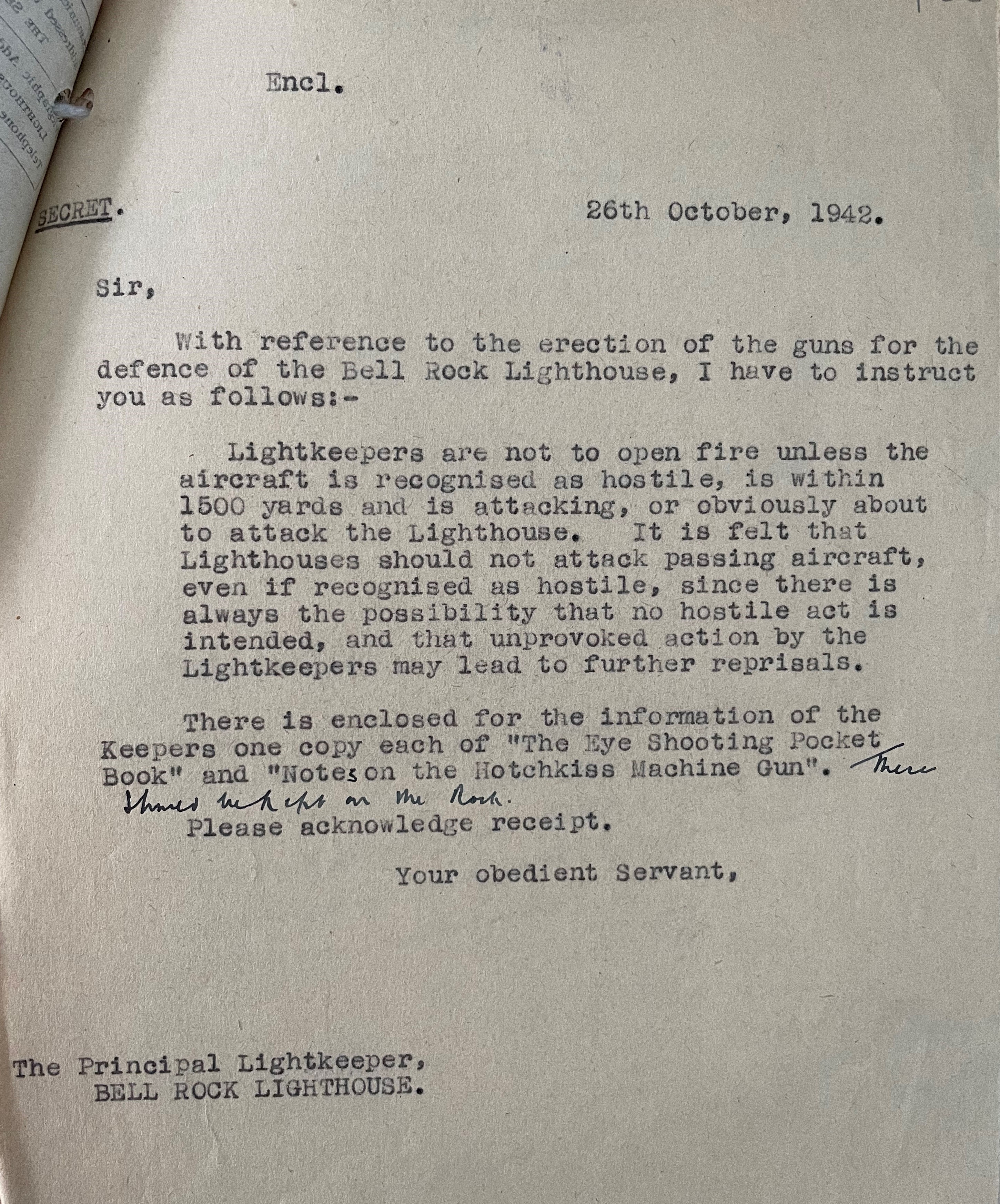
A letter to the Principal Lightkeeper of the Bell Rock Lighthouse, 26 October 1941. (NRS, NLC10/3/61/255)
Over time, changes were made to the lighthouse and its light. In 1902, the full lighting mechanism was removed, and a new dome and lantern installed. The next major modernisation occurred in 1964 with improvements made again to the light, and the living conditions of the Keepers. The Bell Rock remained a manned lighthouse until 1998, when it was fully automated and de-manned on 26 October. Automation of lighthouses in Scotland began as early as 1894 and the significant cost of manning the lighthouses, and the advances in technology, accelerated the process from the 1970s onwards. 2023 marks the 25th anniversary since the last lighthouse, Fair Isle South, was automated.
For further information on the fascinating history of the Bell Rock Lighthouse, please see ‘Further Resources’ below. There is also a feature on what the daily life of a lightkeeper might have been like in the lighthouse, with some of the past keepers highlighted on ScotlandsPeople in ‘Shining a light on the Lives of Lightkeepers’.
Further Resources
- Bellrock.org.uk, an excellent reference site for the Bell Rock Lighthouse
- The Museum of Scottish Lighthouses
- The Signal Tower Museum, Arbroath
- www.nlb.org.uk, Northern Lighthouse Board, Bell Rock
- For the safety of all: a story of Scotland’s lighthouses, Donald S. Murray
- Records of the Commissioners of Northern Lighthouses (Northern Light House Board), National Records of Scotland, NLC
